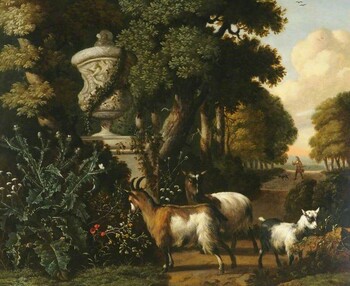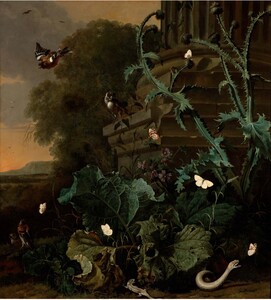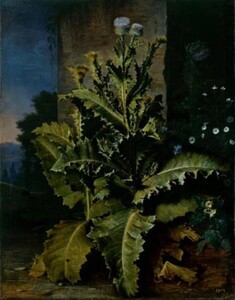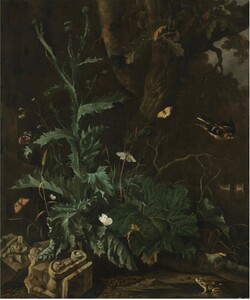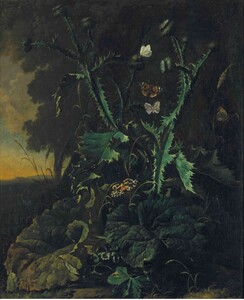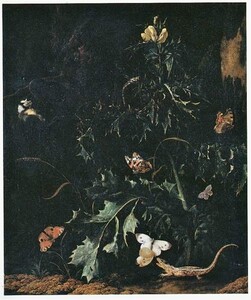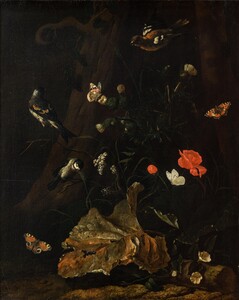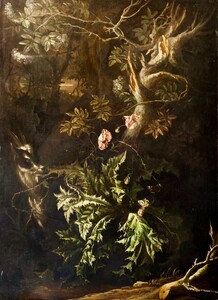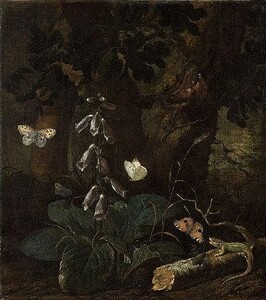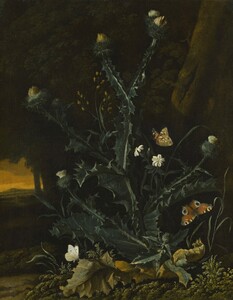11.200 €
Forest floor with butterflies, a dragonfly and a lizard
Oil on canvas : 58,1 X 50,3 cm
Unsigned
Frame : 71,9 X 63,8 cm
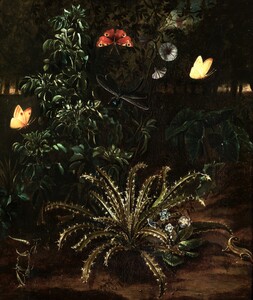
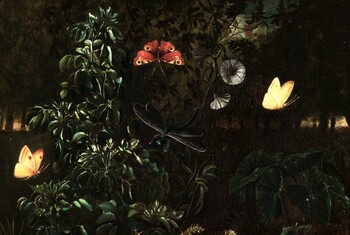
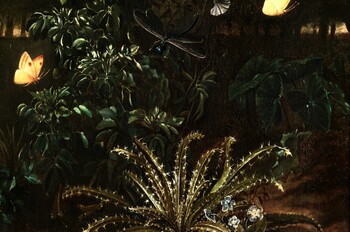
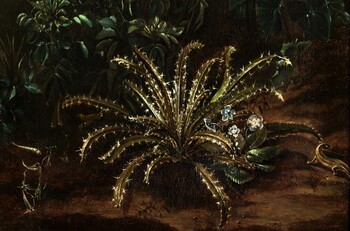

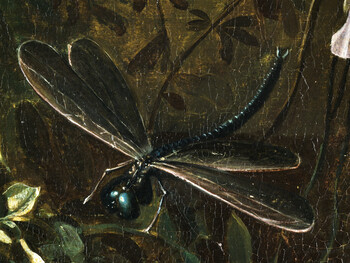
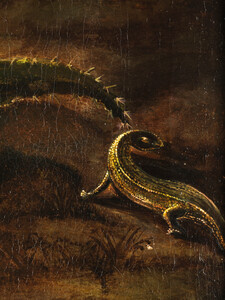
In short
Our painter has skilfully represented at dusk some humble inhabitants of the forest (three butterflies, a dragonfly and a lizard) around a beautifully lit thistle. This painting must date from between 1655 (when Begeyn joined the Leiden Painter’s Guild) and 1673 (when he fled from Holland to England).
Begeyn was influenced by the Dutch painter Otto Marseus van Schrieck (1619/20 – 1678) who had invented this new subject in painting: so-called forest floors or nature pieces. These were accurate depictions of a micro-cosmos of wild flowers and thistles, butterflies, insects, frogs, toads, lizards and even snakes.
About Abraham Begeyn
Dutch painter
Leiden 1637 – 1697 Berlin
Painter of Italianate landscapes and of forest floors.
Teacher unknown; some sources mention the Dutch Italianate landscape painter Nicolaes Berchem as his master.
Begeyn joined the Painter’s Guild of his hometown Leiden in 1655. He paid his guild dues until 1667. He married in 1658 in Wassenaar, which is close to Leiden.
In 1659/1660 he travelled to Paris and then to Italy.
In 1672 he is documented in Amsterdam. That year Holland was being simultaneously attacked by England and France, with the help of the bishop of Münster and of the archbishop of Cologne. This period is known in Holland as the “Disaster year” (“Rampjaar”). The troops of King Louis XIV advanced rapidly from Germany towards the W., until they were stopped by the Dutch Water Line, inundated by the new Stadtholder, William III. By 1674 England, Cologne and Munster signed a peace treaty with Holland, while the war with France expanded outside of Holland.
Begeyn fled to England and settled in London in 1673. Close by, in Richmond, he painted between 1675 and 1677 an important set of Italianate landscapes (some of which hold interesting still life elements) for the Duke and Duchess of Lauderdale at Ham House. According to Fred Meijer Begeyn did not paint anymore still lives after 1673, except the ones for Ham House.
Circa 1680 Begeyn was in France, where he painted two views of the Castle of Chantilly for the Grand Condé (Louis II de Bourbon-Condé).
After this command he returned to Holland, where he settled at The Hague.
In 1688 he was appointed court painter to the Elector of Brandenburg in Berlin. Early biographers say that he died in that town when he fell from a scaffold.
About Nature Pieces
Around 1650, the empirical investigation into the behaviour and physiology of snakes, toads, lizards, chameleons, hedgehogs, etc. is detectable on a pan-European scale. Animals were either collected and housed in jars, or observed in their native or in specially designed and enclosed habitats.
During the second half of the 17th century the Dutch painter Otto Marseus van Schrieck (Nijmegen 1619/20 – 1678 Amsterdam) invented a new genre, a new subject of paintings: so-called "Nature Pieces": a small and bizarre micro-cosmos set against an often Italianate landscape background. These forest floors (“bosgrondjes” in Dutch) represent a mysterious dark close-up of the shadowy undergrowth of forest floors, giving detailed views of wild flowers, weeds, thistles and mushrooms, animated by butterflies, strange insects, reptiles, toads, frogs and lizards.
In 1648 van Schrieck had travelled to Italy with Mathias Withoos and with Willem van Aelst. In Rome they had joined the Schildersbent, an association of Northern painters, mostly Dutch and Flemish, notorious for its bacchic rituals and opposition to the Roman Accademia di San Luca. Here van Schrieck’s "Bentname" had been "Snuffelaar", the "Snuffler" because of his habit of roaming the countryside in search of plants, lizards and other animals.
Back in Holland van Schrieck, who had married a wealthy man's daughter in 1664, had a small estate outside Amsterdam, where he bred snakes and other animals.
Many important Dutch artists from the 2nd half of the 17th century and from the early 18th century painted the same subjects and were equally influenced by Otto Marseus van Schrieck, such as Rachel Ruysch, Abraham Begeyn, Willem van Aelst, Elias van den Broeck, Abraham Mignon, Melchior de Hondecoeter and Nicolaes Lachtropius. His influence also extended to Italy, Germany and Austria.
Why should you buy this painting?
Because this attractive forest floor holds a deeper Vanitas meaning of life and death: the recklessness of the butterflies is opposed to the lizard who is hunting for them.
Comparative paintings
Click photos for more details


